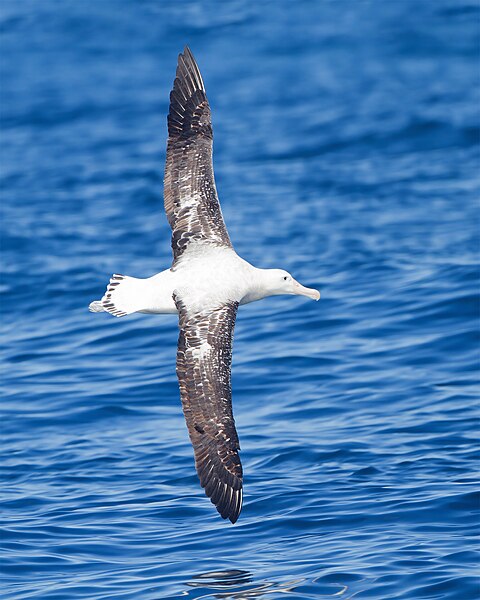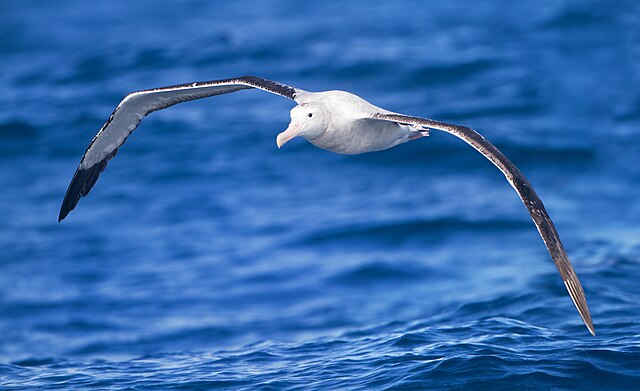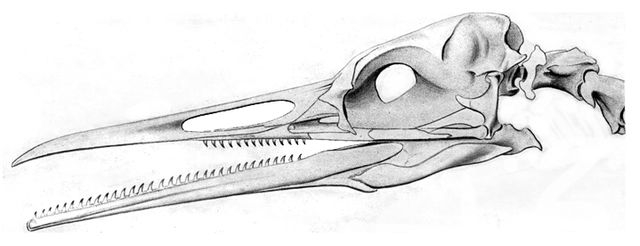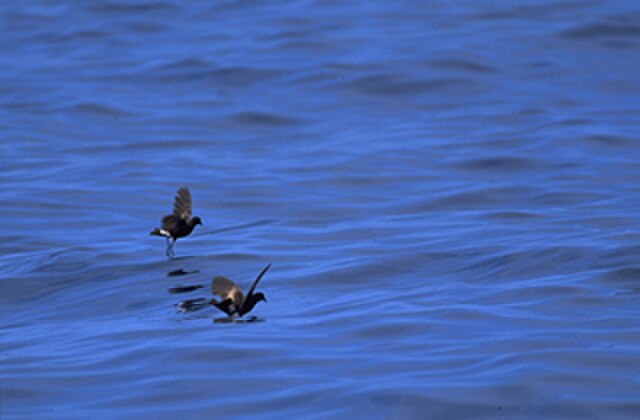The snowy albatross, also known as the white-winged albatross or goonie, is a large seabird from the family Diomedeidae; they have a circumpolar range in the Southern Ocean. It is the most recently described species of albatross and was long considered to be the same species as the Tristan albatross and the Antipodean albatross. Together with the Amsterdam albatross, it forms the wandering albatross species complex. When the complex was split into four species, the English name of the nominate form was changed from wandering albatross to snowy albatross.
Snowy albatross
In flight
Snowy albatrosses have the longest wingspan of any living bird.
Egg of Diomedea exulans
Seabirds are birds that are adapted to life within the marine environment. While seabirds vary greatly in lifestyle, behaviour and physiology, they often exhibit striking convergent evolution, as the same environmental problems and feeding niches have resulted in similar adaptations. The first seabirds evolved in the Cretaceous period, and modern seabird families emerged in the Paleogene.
The sooty tern is highly aerial and marine and spends months flying at sea, returning to land only for breeding.
The Cretaceous seabird Hesperornis
Cormorants, like this double-crested cormorant, have plumage that is partly wettable. This functional adaptation balances the competing requirement for thermoregulation against that of the need to reduce buoyancy.
Wilson's storm petrels pattering on the water's surface








